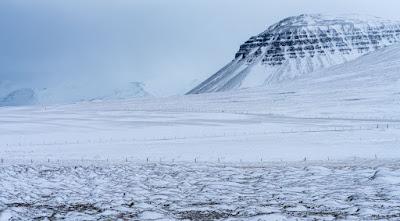
Iceland
With many thanks to our friend Owen Floody for another exceptional contribution to The Intrepid Tourist.
Iceland has become a popular tourist destination, reflecting its accessibility, manageable size, and dramatic landscapes. Even in winter, Iceland has much to offer. Landscapes that are dramatic in other seasons can become even more so when mountains are dusted by snow, waterfalls are embellished by icicles, and low clouds add mystery and mood. Throw glacial ice caves and possible sightings of the aurora borealis into the mix and Iceland may be irresistible.
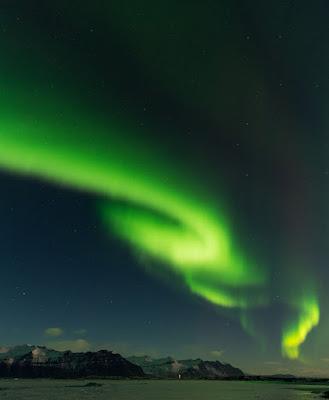
Aurora
However, Iceland doesn’t give up its treasures easily. Sightings of the aurora require a coincidence of elevated solar activity and clear skies. But Iceland’s frequent high winds and famously changeable weather can make the second, and thus the coincidence, hard to achieve.
At the same time, nothing ventured, nothing gained. With this in mind, I recently completed an 11-day Winter in Iceland photo tour led by Haukur Snorasson of Look North Travel (https://www.phototours.is). Given the weather-related and other challenges that Iceland can pose, one can benefit greatly from an expert’s efforts to match the best available scenes with route, time of day, and current conditions.
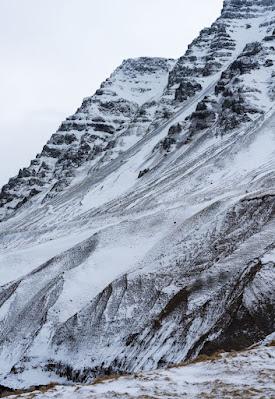
Rock striations.
Including Haukur, we were a group of six, packed comfortably in a carry-everything, go-anywhere van. Most in the group were avid photographers. How do you recognize an avid photographer? In the past, a tripod and high-end camera would suffice. Now, however, most in this sample of avid photographers were packing iPhones as well as cameras, and more discussion revolved around the images taken with the former.
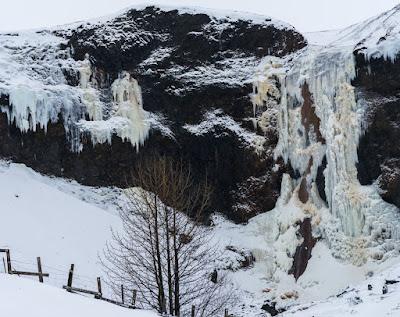
Frozen waterfall.
Our tour covered a lot of ground. Iceland’s “ring road” covers about 821 miles and we went a bit beyond it, especially to the north. I was very happy to have Haukur driving. The wind howled almost constantly, buffeting the vehicle and threatening to blow us off the road. The fact that this threat was not just imagined was provided by the need to get over several passes before the winds closed them. Lunch generally was fast food, but the hotels were great as were the dinners. Not surprisingly, we had some of the best Arctic char ever, especially at the Mödrudalur Country Hotel (find that if you can!).
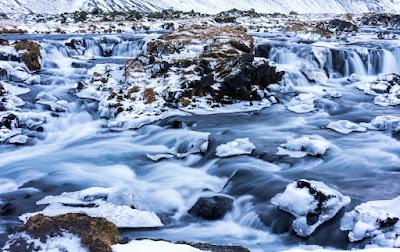
Waterfall and river.
The scenery more than met my expectations. Almost everything that I saw on this trip I had previously seen under more benign conditions. The winter conditions unquestionably made everything more dramatic. Mountains emerged from or receded into the mist (first of images that accompany this column), rock striations and other formations jumped out at you, and ice arrested some waterfalls while embellishing others.
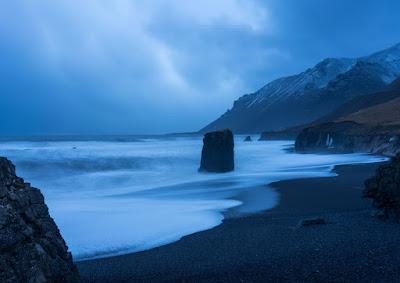
The rugged Iceland coast.
These were wonderful additions to Iceland’s usual fare of rugged coasts and glacier lagoons dotted with icebergs. But what about our primary goals of seeing the aurora and getting into one or more ice cave?
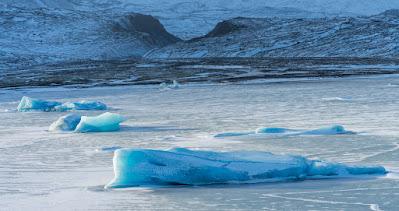
Stranded icebergs.
Here, I am happy to report that we were extremely fortunate. We enjoyed good aurora sightings on three of our ten nights. Our visit to a relatively isolated ice cave, one that we had all to ourselves, fell on the first day in a week on which the helicopter ferry was able to fly. And our proximity to a second cave made it possible for us to plug ourselves into a gap created by weather-related cancellations of visits from farther afield (last image). Some of this success reflected preparation and effort. For example, we scoured multiple sources for tips on the nights and times at which the aurora might be visible and then we mounted expeditions or watches at all of the best times. Nevertheless, it is clear that we were very lucky.
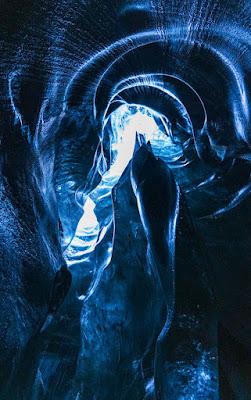
Ice cave.
However, do not be fooled into thinking that this luck made the tour an entirely easy one. The winds howled almost constantly, sometimes making it difficult to stand, let alone explore. The temperature was only moderately low (about freezing) most of the time. But there were some genuinely cold mornings and nights, and even the prevailing moderately low temperatures became frigid when combined with the typically high winds. We dressed well and met most of these challenges. Fingers, however, remained vulnerable: On more than one occasion, I had to cut short an aurora viewing because I could no longer operate my fingers or camera. Footing was the other area of personal concern. Wherever we were, the substrate typically was snow and ice. Crampons that could be pulled on over our boots were a necessity. On roads or sidewalks, the type featuring coiled wires were sufficient. But many of our explorations (e.g., into ice caves, around waterfalls, or in search of sites from which to view the aurora) required more serious crampons, with real teeth. In Iceland and elsewhere, winter landscapes can be magical. But they do require some season-specific preparations.Click HERE for an earlier post (October 4, 2021) by Owen Floody about Iceland.
